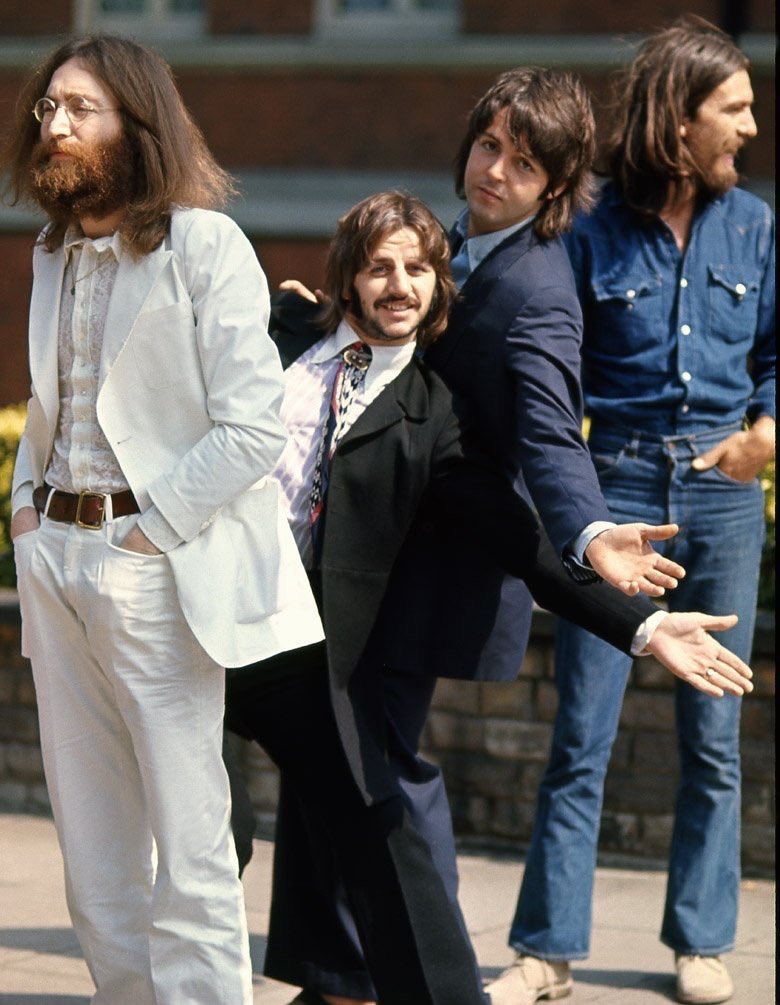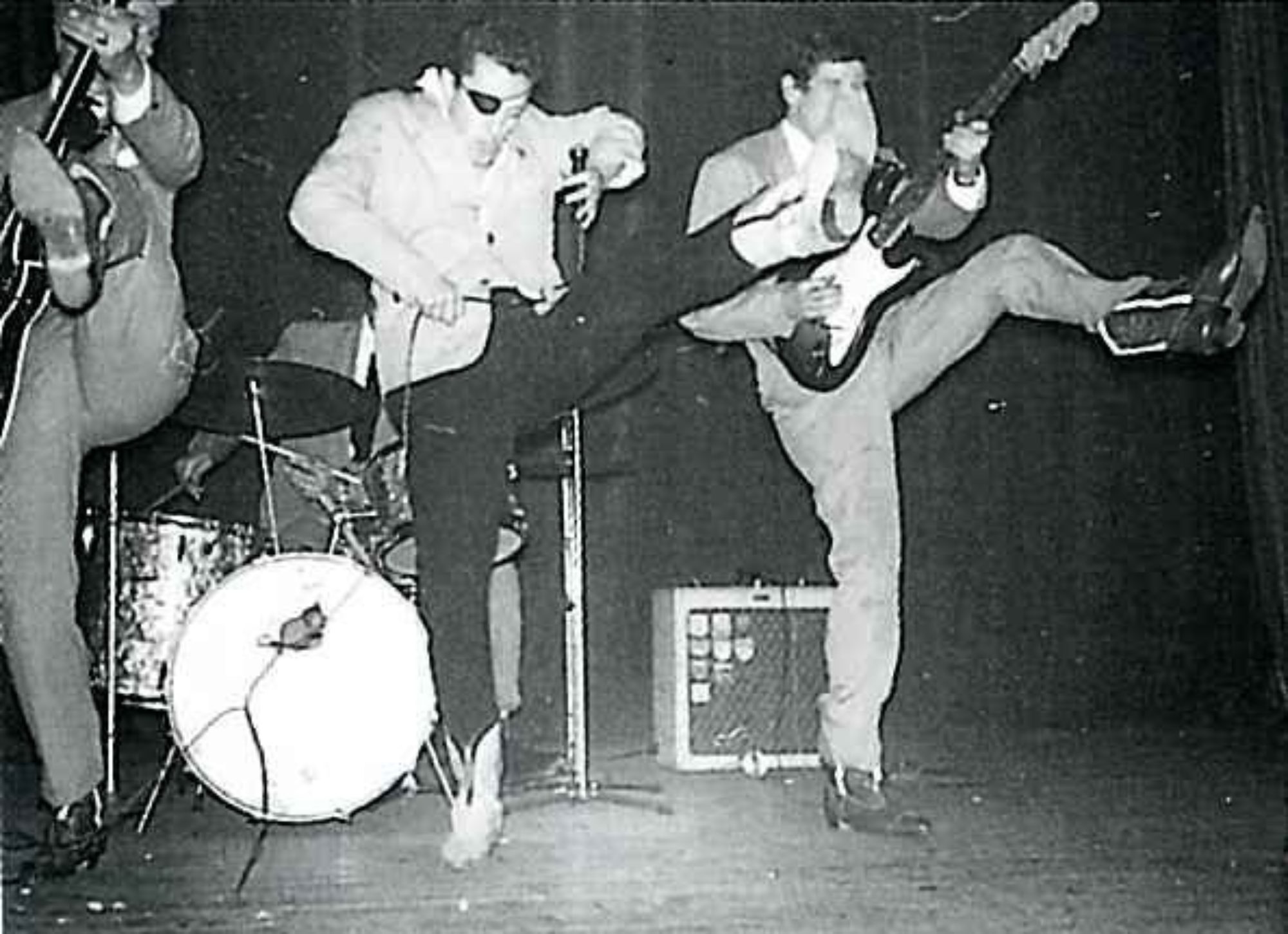
Like previous deluxe 50th anniversary issues Sgt. Pepper and The White Album, Apple are bringing out multiple formats to celebrate 50 years of Abbey Road.
There’s a standard 2 disc CD which has a new stereo mix on disc 1 while disc 2 has the same running order but in the form of outtakes and demos. 40 page booklet included.
If you just want the original album in its new stereo mix (yeah, right!) then there’s a single CD issue and a vinyl picture disc.
The one everyone is going to want is of course the super deluxe. CD 1 is the new mix. Cd’s 2 & 3 contain 23 demo and session recordings, all placed in chronological order. You also get a blu ray disc and a 100 page booklet. This package also issued on vinyl without the blu ray and states the release as a limited edition.

Do we need this? Simply… yes. Yes you do. You need the super deluxe, if the budget doesn’t stretch that far then go for the 2 CD issue.
I’m not going to review the album here, we’ve all heard it before, so because the super deluxe brings us 23 songs of demos or session recording in chronological order, I’m attempting to do likewise. Just to see what we might expect and what to keep an eye out for.
Oh Yeah! Alright! Abbey Road – Chronological Order.
Wednesday 22nd January 1969 the Beatles returned to EMI studios in order to continue work on the Get Back project. It had been just over three months since they last recorded here, during sessions for ‘the White Album’ which ended on the 14th October in studio 2, the morning Ringo flew out of the country for a family holiday, leaving the other three Beatles to finalise the album.
It was during these sessions that Ringo famously quit the Beatles, walking out before returning nearly two weeks later. Five months later John suggested the band break up and call it a day, Paul came up with the idea of freshening things up, to ‘Get Back’ to live performances but George was totally against it. They moved forward, rehearsing at Twickenham new songs for a worldwide live television show. On the 10th of January, indifferent to the show and growing tired of Paul’s criticism , George quit. He returned a few days later, but making his point and all live shows – concerts and TV – were dropped.
Instead, what started on Wednesday 22nd January 1969 became known as the Get Back Sessions, making a film capturing the band recording an album. Just let the cameras roll and see what happens! Nothing was planned, no organisation, often the band went into impromptu performances, jamming and dropping in and out of songs with little tracks finished. The tape boxes were uncatalogued, there were no ‘takes’ as the film just kept rolling, recording the arguments and all the jokes. It was messy, and it was abandoned.
During the sessions, 12 songs would make the Abbey Road album.
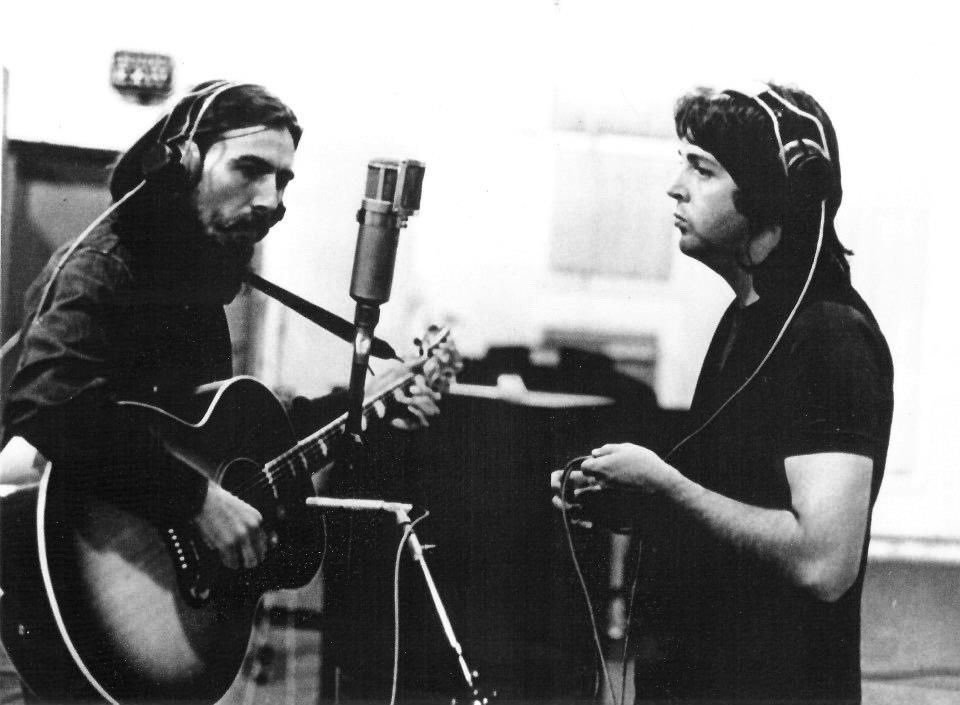
A month later, on Saturday 22nd February, John’s ‘I Want You’ began the sessions of what was to be Abbey Road. The song would eventually become ‘I Want You (She’s So Heavy)’ at nearly eight minutes long and consisting of only 14 different words, John wrote it about his love for Yoko.
John – “When you’re drowning, you don’t say, ‘I would be incredibly pleased if someone would have the foresight to notice me drowning and come and help me.’ You just scream.”
John screams “Yeah” until his voice breaks, white-noise increases and drowns everything as Paul plays his bass aggressively. It was over eight minutes long, but John instructed engineer Emerick to just cut it off, bringing side 1 to an abrupt end.
Although it was the first to be recorded for the album, it was the last to be finished when, on the 20th August, all four Beatles were in the studio together for the last time.
George Harrison entered the EMI studios on his 26th birthday, alone, and recorded demos of three new songs – Old Brown Shoe, All Things Must Pass, and, Something. Take 1 started mid-April and at one point the song nearly stretched to eight minutes due to John’s long drawn out piano instrumental. It can still be heard during the ‘I don’t know’ vocal.
Because George had an allocation of just two songs per album he had a stockpile of songs, so ‘Something’ was given to Joe Cocker who released it in November.
George later gave George Martin an acetate so he could write an orchestral score, normally using an orchestra was an expensive cost for a studio, so these orchestral bits were done at an economical sense – near the end of recording the album. This was mid-august and used also on GoldenSlumbers/Carry That Weight, The End and Here Comes The Sun.
April 69 ‘Oh! Darling’ and ‘Octopus’s Garden’. Ringo didn’t have a song during the Get Back sessions, something that hadn’t happened before although he did have this song which was not rehearsed at that time.
The song had no evolution really, with the first take not too far away from the album’s version. The sound of bubbles on the track is actually Ringo blowing through a straw in a glass of milk.
Paul used to come into the studio on his own, he came in several days in a row to sing ‘Oh Darling’, he would only try once each day, wanting to capture the rawness of the vocal.
He would finally settle on a version recorded on the 23rd July, just before the Beatles started ‘The End’. He sang with the track coming through the studio speakers (rather than headphones) to give the feel of performing to a live audience.
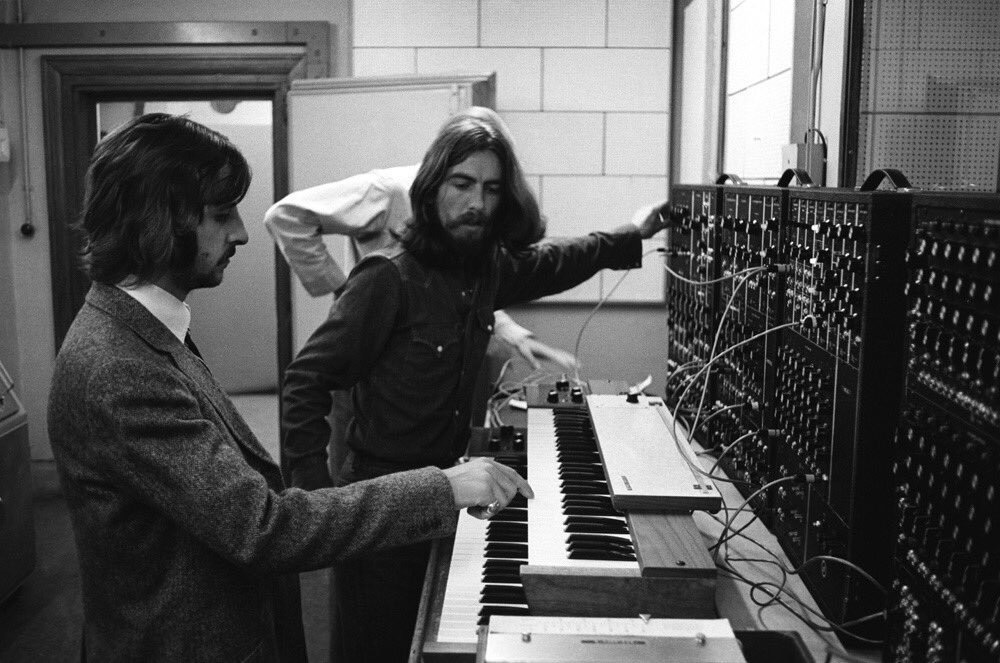
Sometime in May the Beatles must have had the medley idea, ‘You Never Give me Your Money’ was recorded with an abrupt end which gives the impression that it was to morph into another. The cut-out was just before the ‘1 2 3 4 5 6 7, all good children go to heaven.’
The theme of the song directed to the Beatles’ finances, mostly inspired by newly appointed Allen Klein, hired against Paul’s wishes as their manager. The ‘pick up the bags, get in the limousine…’ was Paul describing an escape with Linda to the country, leaving behind the band and all the tense atmosphere.
One problem with the song was fixing a merge onto the next track. Originally a single note was used to connect this part of the melody, but no one was really happy with that. It was much later on in the album’s development when the problem was finally sorted. Paul brought in some random tape loops of birds, bells and other noises. George Martin was given the loops to make the songs connect.
Early one morning in July Paul recorded ‘Her Majesty’ on his own, he lived close to the studios and recorded three takes before Ringo and George showed up. John was in hospital at the time after a car crash in Scotland with his family.
Paul was happy with the 23-second long song, intended to be considered for the medley side of the album.
(When piecing together the album, ‘Her Majesty’ was placed in-between Mean Mr Mustard and Polythene Pam, but listening back Paul disliked it and told the engineer to ‘throw it away’. But having been told to never throw anything away, he cut it and stuck it on at the end, but he cut it badly as he accidently left in the last note. On the album you here a crash at the beginning of Her Majesty – this was actually the last note of Mean Mr Mustard, and, the final note of Her Majesty, missing at the end of the song, is actually on the album, but buried at the start of polythene Pam.)
Golden Slumbers and Carry That Weight were started on the same day as Her Majesty, although their working title was just plain ‘Golden Slumbers’ as they were recorded as one song. John did participate in an overdub session of the song later in the month.
Paul was particularly pleased with his vocal, starting softly in lullaby mode before switching to a stronger vocal when the drums start up.
Paul – “I remember trying to get a very strong vocal on it, because it was such a gentle theme, so I worked on the strength of the vocal on it, and ended up quite pleased with it.”
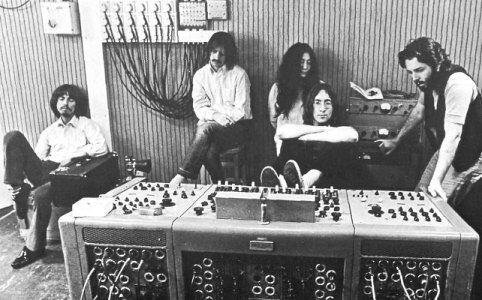
On Ringo’s birthday they started work on ‘Here Comes The Sun’, still as three Beatles as John was still in hospital. At some point the song contained a guitar solo but it was not included in the final mix.
George – “Here Comes the Sun” was written at the time when Apple was getting like school, where we had to go and be businessmen: ‘Sign this’ and ‘sign that.’ Anyway, it seems as if winter in England goes on forever, by the time spring comes you really deserve it. So one day I decided I was going to sag off Apple and I went over to Eric Clapton’s house. The relief of not having to go see all those dopey accountants was wonderful, and I walked around the garden with one of Eric’s acoustic guitars and wrote “Here Comes the Sun”.
John’s first session back after his car crash was 9th July, during the first takes of ‘Maxwell’s Silver Hammer’. The song was nearly considered for the white album, then it was rehearsed during the Get Back sessions, and now it was being recorded.
According to John, Paul wanted it released as a single. John disliked it. George disliked it. Ringo disliked it.
Ringo – “The worst session ever was ‘Maxwell’s Silver Hammer.’ It was the worst track we ever had to record. It went on for fucking weeks. I thought it was mad”
Yoko was more seriously hurt in the crash than John and was ordered complete bed rest, so a bed was brought into the studio and wheeled around between studios two and three depending where John was. They rented a proper blacksmith’s anvil for Ringo to hit.
John hadn’t offered the band any new material since ‘The Ballad of John and Yoko’ three months earlier, but on Monday 21st July he came to work with ‘Come Together’. John sings ‘Shoot me’ but the finished record has a bass note where John sings ‘me’ so you can only really hear ‘shoot’. In the early takes there was only George’s guitar so John’s ‘shoot me’ was clear.
Paul later claimed to be upset he didn’t sing with John on the choruses, when asking John what he wanted him to do, John replied ‘don’t worry, I’ll do the overdubs on this’ and did his own backing vocals.

‘The End’ started life as simply ‘Ending’ and work started three weeks after commencing Golden Slumbers. Right from take 1 the band was tight, showing signs they entered the studio having already a plan in mind. Ringo’s only Beatle drum solo nearly never made it, instead it was accompanied with two lead guitars and a tambourine. But these were eventually omitted giving Ringo his solo, interestingly, seven takes were recorded and seven different style drum solo’s tried.
The last song recorded by all four Beatles, engineer Emerick recalled – “they looked like they had gone back in time, like they were kids again, playing together for the sheer enjoyment of it. More than anything, they reminded me of gunslingers, with their guitars strapped on, looks of steely-eyed resolve, determined to outdo one another. Yet there was no animosity, no tension at all – you could tell they were simply having fun.”
Paul – “I wanted to end with a little meaningful couplet, so I followed the Bard and wrote a couplet.”
“And in the end, the love you take, is equal to the love you make…”
John’s contribution to side B’s medley started late July, ‘Here Comes The Sun King’, appeared on the finished album as two tracks – ‘Sun King’ and ‘Mean Mr Mustard.’ The recording actually continued into a jamming session, ‘Ain’t She Sweet’, ‘Be-Bop-A-Lula’ performed impromptu like a Get Back session six months earlier.
The foreign Spanish and Italian words didn’t mean anything, they were random words used to fit the music, anything they remembered from school days that would fit.
The next day and the medley continued with a song each from John and Paul. ‘Polythene Pam’ and ‘She Came In Through The Bathroom Window’ were recorded as one song, starting with John’s acoustic guitar strikes and finishing with Paul’s “…on the phone to me, oh yeah.”
John’s was written in India 1968 about a mythical Liverpool scrubber dressed in her jackboots and kilt, hence the stronger scouse accent. You can also hear him shouting encouragement to the others ‘fab, that’s great, real good that, real good.’
A fanatical group of fans which followed the Beatles everywhere where called ‘Apple Scruffs’, on one occasion one of them managed to climb a ladder and break into Paul’s house. She came in through the bathroom window

The last song to get started commenced on the 1st of August. Inspired by Yoko playing Beethoven’s ‘The Moonlight Sonata’ on the piano, John reversed the notes and wrote ‘Because.’ Ringo did play on the recording but was cut and therefore doesn’t feature on the final edit.
John, Paul and George sing the harmony, the three voices overlaid three times, making a nine-part harmony.
The album had the working title of Everest, coming from a brand of cigarettes, but when someone mentioned flying off o Tibet for the photo shoot, it was quickly dropped.
On the morning of Friday 8th August the Beatles hired a policeman to stop the traffic on Abbey Road, and spent 10 minutes crossing the road six times for the photoshoot. The title of the album was named after the road their studio was on, the following year EMI studios was renamed Abbey Road studios.

It was a remarkable record. The Beatles came together and even though mixing was largely a solo effort, when they recorded it was plain to see how much they enjoyed being together, how tight a unit they were and how they responded to each other.
Ringo’s drumming was colossal, George shoving his writing talent to the premier league in two massive songs, John’s and Paul’s immense masterclass – despite solo projects on the horizon, they gave everything to make sure the legacy, their music and their friendship became greater, even in the knowledge this would be their final act.
